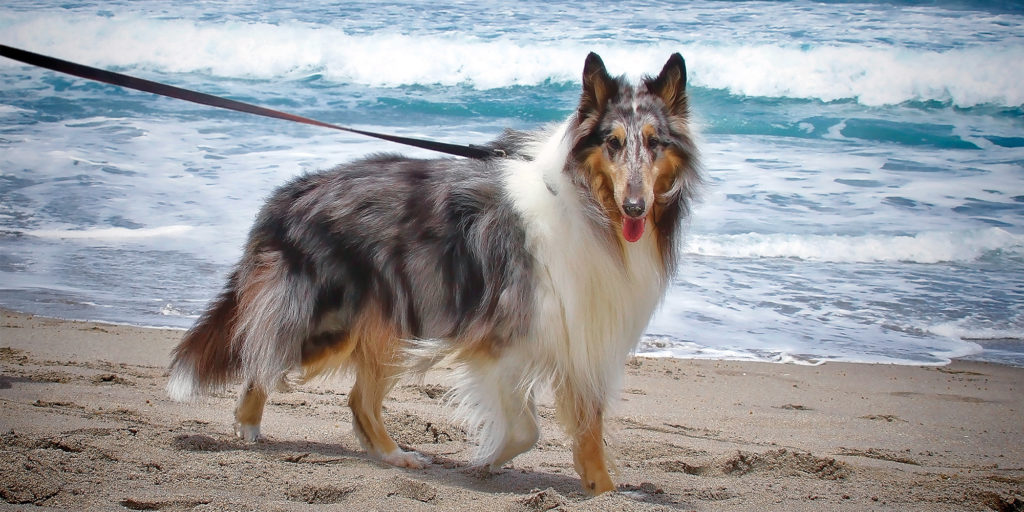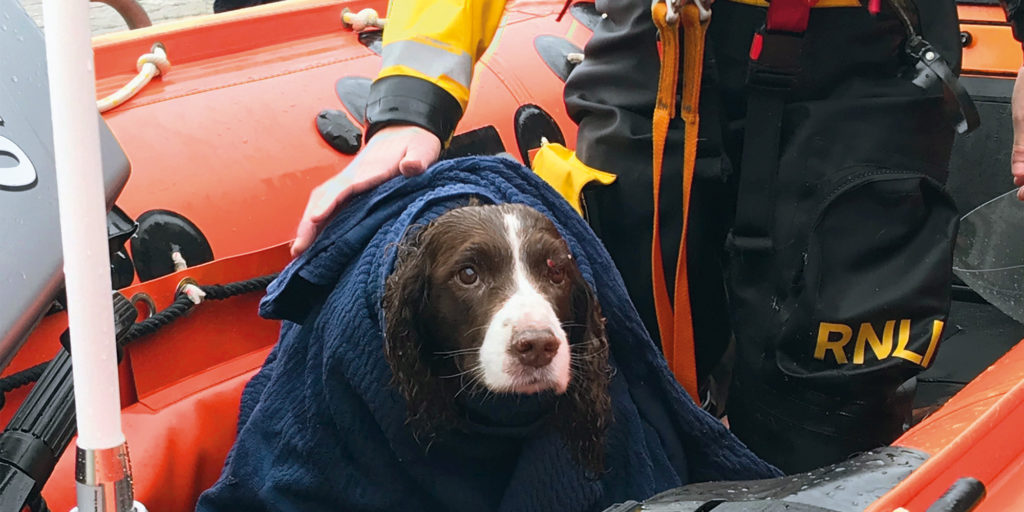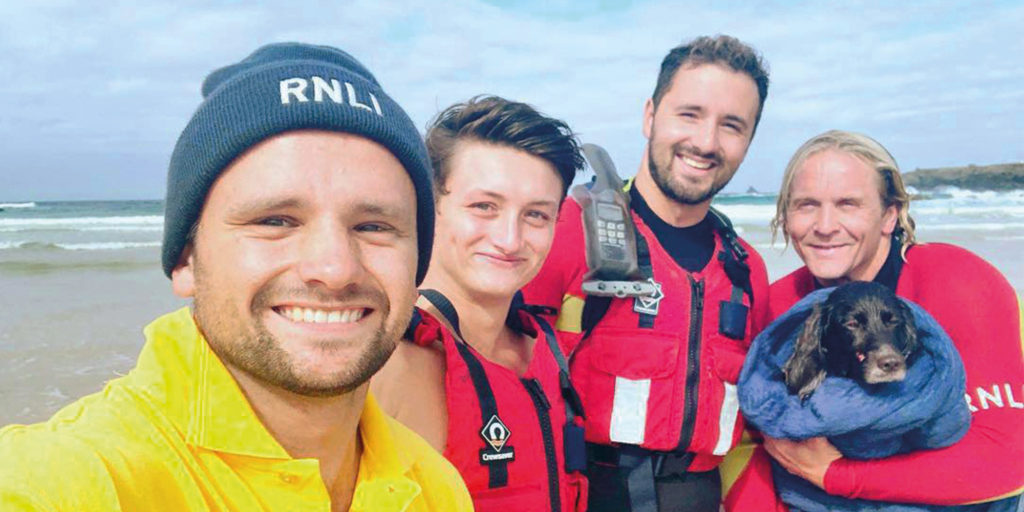

Safe by the sea
We hear some recent stories of doggie rescues on the coast and get some tips on how you and your hound can stay safe by the sea.
It may seem unlikely that your dog could get into trouble on the coast – they always seem so surefooted and they’ve never had an issue with swimming – yet it can happen surprisingly easily. Take springer spaniel, Lola, for example. In September last year, RNLI lifeguards patrolling the beaches in north Cornwall found Lola trapped at the bottom of a 40 foot cliff, with an incoming tide. Alerted by a member of the public about a dog who had run off the cliff, they immediately radioed their colleagues and requested the launch of the IRB (Inshore Rescue Boat). With lifeguards co-ordinating from atop the cliffs as the boat made its approach, the RNLI was able to reunite Lola safely with her owner, with just a few scratches and bruises. A lucky escape indeed!
“this was a lucky escape for Barney as the tide was coming in very quickly”
Another such tale involved Barney, who was found trapped by the tide at No Fear beach in Whitsand Bay last June. This was the second visit to the small beach for the RNLI lifeguards in as many days, after rescuing a group of walkers who’d become cut off by the tide the day before. Due to the rough water, the only way to reach Barney was by boat, so RNLI lifeguards, Joe Saunders and Charlie Gillet, immediately launched the IRB. Unsurprisingly it took little persuasion to get Barney into the boat, before being safely returned to his owners. Charlie explains: “He was clearly very excited to see us when we picked him up, and was very well behaved on the journey home. But this was a lucky escape for Barney as the tide was coming in very quickly.” This highlights the importance of checking the tide times, and ensuring your dogs don’t get so caught up chasing seagulls that they find themselves stranded!
Even more recent was the rescue of Gilmore in early February this year. Having received a report of a dog slipping down the rocks between Man’s Head and Clodgy Point from some deeply concerned owners, the Falmouth coastguard radioed it in and the RNLI launched the IRB. At the helm of the four-strong crew was Barney Stevens, who says: “The conditions were okay, but there was a three foot swell and waves between four and five foot. Once we arrived we were pleased to see that Gilmore the springer spaniel had managed to make his way onto the small portion of beach. His owners had done the right thing by
alerting the right authorities to ensure we could respond safely.”
After securing Gilmore and encouraging him into the boat, he was quickly returned to St Ives Lifeboat station, where he was reunited with his delighted owners and taken quickly to the vets for a full checkover. We’re pleased to say that he is now home and well!
In 2017, 91 dog-walking incidents called for RNLI lifeboat launches across the UK, while 97 required attendance by lifeguards in the same year. It’s important to remember that the coast can be a dangerous place for anyone, and that includes
dogs, so to help you avoid getting into any danger whilst out walking your dog, the RNLI offers a few simple tips.
When you’re close to cliff edges, it’s important to keep both you and your dog safe, so be sure to keep your furry friend on the lead. When you’re by the water and your dog decides to go for a swim, if they should get stuck in mud, don’t wade in after them. Instead, move to a place your dog can get to safely and call them – they’ll probably get out by themselves. If they can’t, call 999 or 112 and ask for the Coastguard.
Discover More
The RNLI provides a 24-hour search and rescue service in the UK and Ireland from 238 lifeboat stations. There are also more than 1,000 lifeguards on over 240 UK beaches. All of this relies on donations, so if you’re looking to give to a worthy cause, head to www.rnli.org
"this was a lucky escape for Barney as the tide was coming in very quickly"




